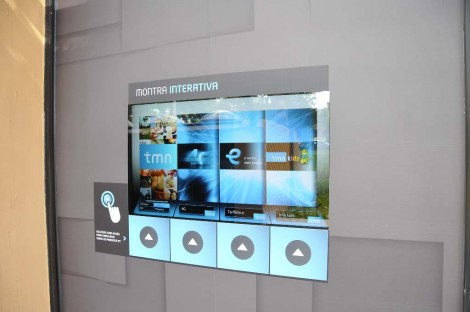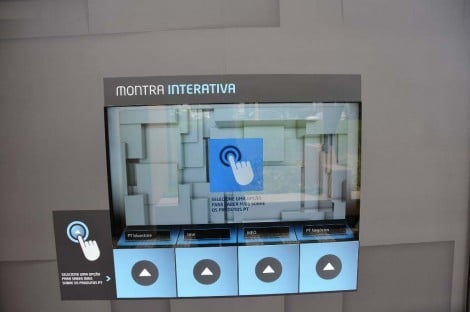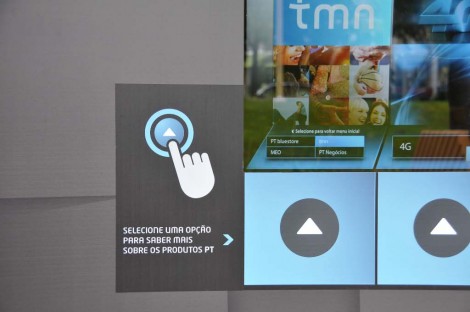To follow up on our latest post on future store windows, we publish today this example we found in Portugal in an ICT store.
Located at the bottom of an office building in Lisbon, this store proposes a window with an integrated touch screen. It’s more than a tablet; it’s actually a technology that has been used extensively in the industry and in automation for years.
This technology is now made available, thanks to increased customer awareness and literacy, for B2C interactions. When you think about it the dynamics of the market is actually pretty noticeable.
This technology has existed for more than 10 years in the industry but was seen as a work-only tool requiring prior training (and let’s be honest the application were far from being sexy and user-friendly). With consumers being increasingly equipped with tablets, a giant lap could be made to cross the B2B/B2C gap and propose the same technology to end-consumers.
A new store-consumer relationship
This technology reconfigures the relationship with the store and displaces the frontiers of offline purchase. The window was considered until as place where products were merely displayed to encourage the consumer to get IN the store to learn more and eventually to make a purchase.
Interactive device ON the window diminish in a certain way the need to enter the store. They can provide as much –if not more- information as a sales rep and you could even go so far as to think of online purchase made in the street. What a paradox. Everything may became possible with m-payments and we observe already experiments of the ultimate evolution of this concept. Tesco tested its products walls in the Seoul metro and Delhaize had its Cube in Brussels metro. Rather than having a store you merely have a picture of the product. What is the difference with a 100% online purchase then ? Will the 21st century store be reduced to a window only where REAL products help you decide on a purchase made ONLINE ?
My take :
This is kind of fascinating. We are currently at the convergence of new times where not-well-mastered technologies are looking for a dedicated and well suited usage. There is so much space for improvement that we recognize being in the fuzzy front end of innovation, as scholars call it. Is the future of retail ONFline, a mix of Online and OFFline? Time will tell.
Posted in Innovation, Marketing.


